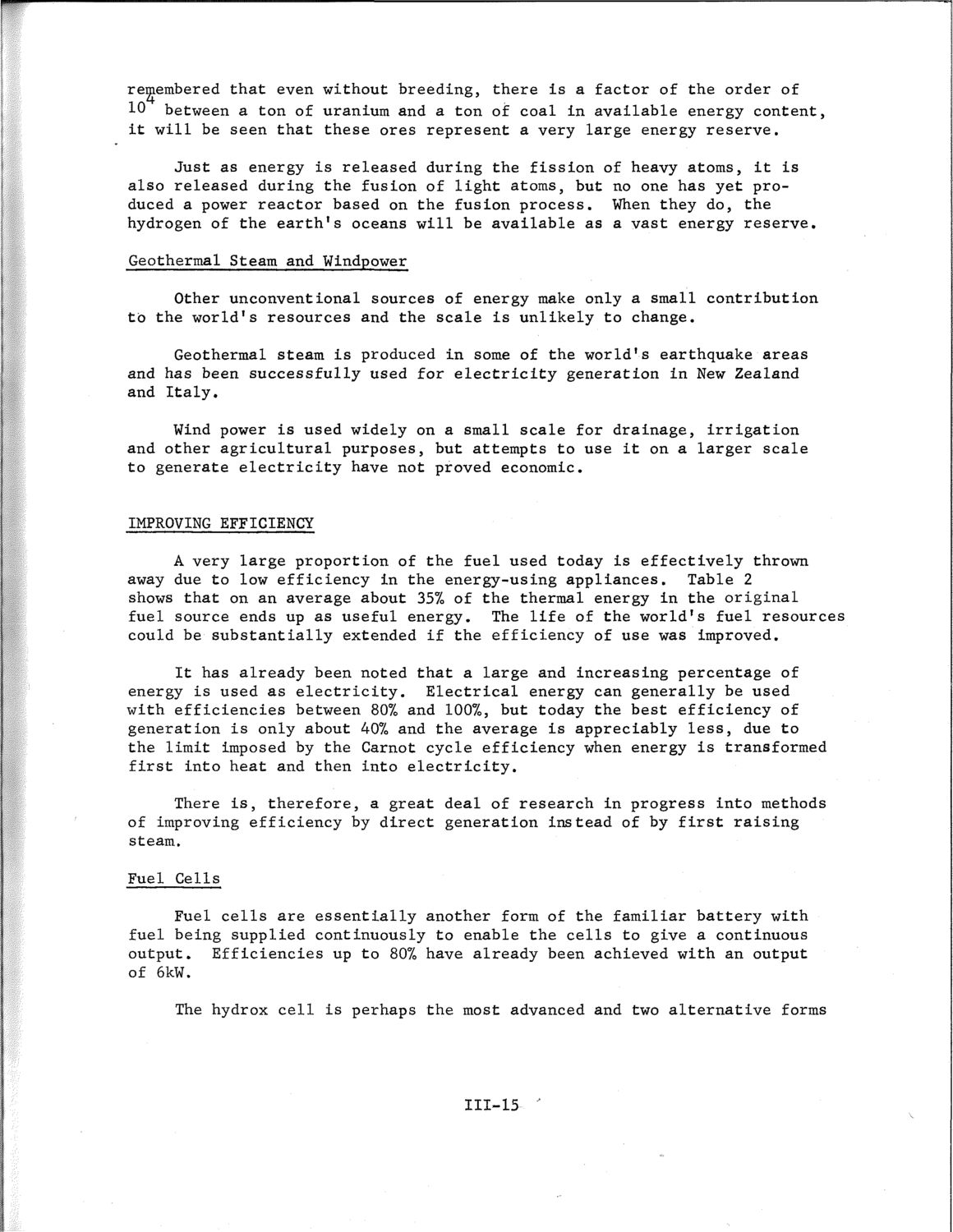| |
| |
Caption: SWE - Proceedings of the First International Conference of Women Engineers and Scientists
This is a reduced-resolution page image for fast online browsing.

EXTRACTED TEXT FROM PAGE:
remembered that even without breeding, there is a factor of the order of 10 between a ton of uranium and a ton of coal in available energy content, it will be seen that these ores represent a very large energy reserve. Just as energy is released during the fission of heavy atoms, it is also released during the fusion of light atoms, but no one has yet produced a power reactor based on the fusion process. When they do, the hydrogen of the earth's oceans will be available as a vast energy reserve. Geothermal Steam and Windpower Other unconventional sources of energy make only a small contribution to the world's resources and the scale is unlikely to change. Geothermal steam is produced in some of the world's earthquake areas and has been successfully used for electricity generation in New Zealand and Italy. Wind power is used widely on a small scale for drainage, irrigation and other agricultural purposes, but attempts to use it on a larger scale to generate electricity have not proved economic. IMPROVING EFFICIENCY A very large proportion of the fuel used today is effectively thrown away due to low efficiency in the energy-using appliances. Table 2 shows that on an average about 35% of the thermal energy in the original fuel source ends up as useful energy. The life of the world's fuel resources could be substantially extended if the efficiency of use was improved. It has already been noted that a large and increasing percentage of energy is used as electricity. Electrical energy can generally be used with efficiencies between 807o and 1007o, but today the best efficiency of generation is only about 407„ and the average is appreciably less, due to the limit imposed by the Carnot cycle efficiency when energy is transformed first into heat and then into electricity. There is, therefore, a great deal of research in progress into methods of improving efficiency by direct generation instead of by first raising steam. Fuel Cells Fuel cells are essentially another form of the familiar battery with fuel being supplied continuously to enable the cells to give a continuous output. Efficiencies up to 80% have already been achieved with an output of 6kW. The hydrox cell Is perhaps the most advanced and two alternative forms 111-15
| |